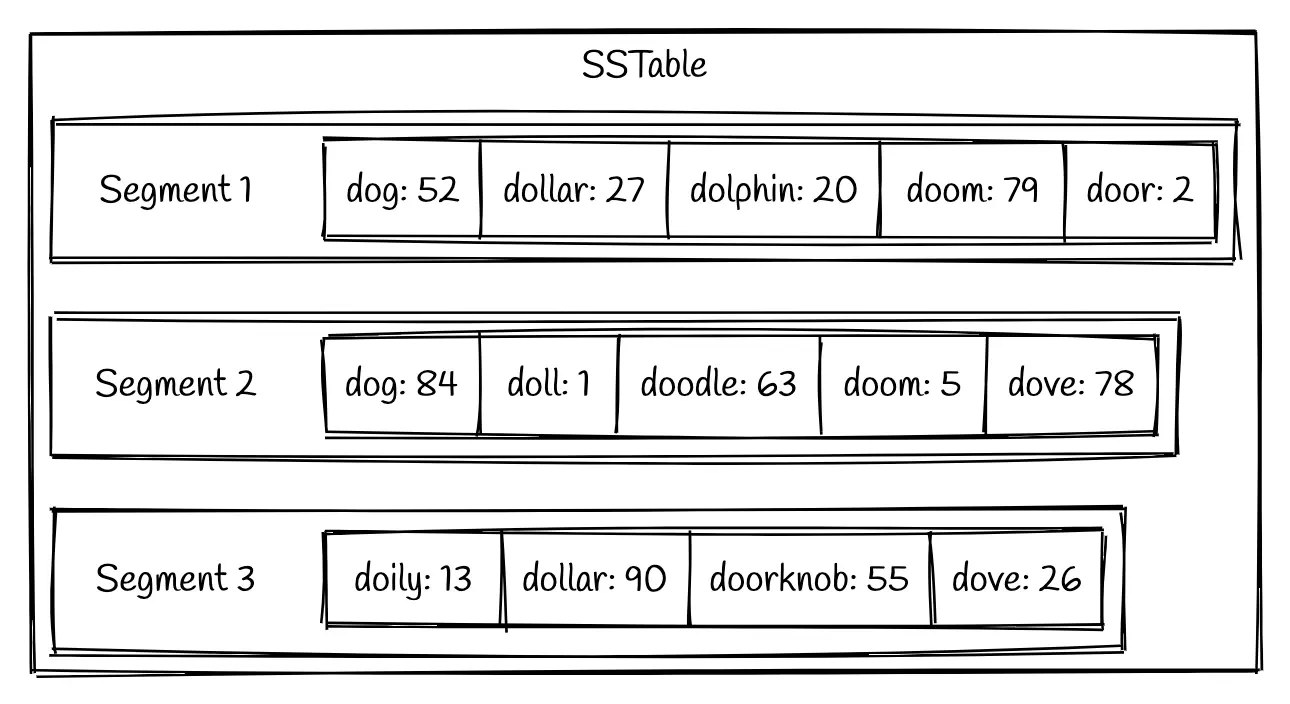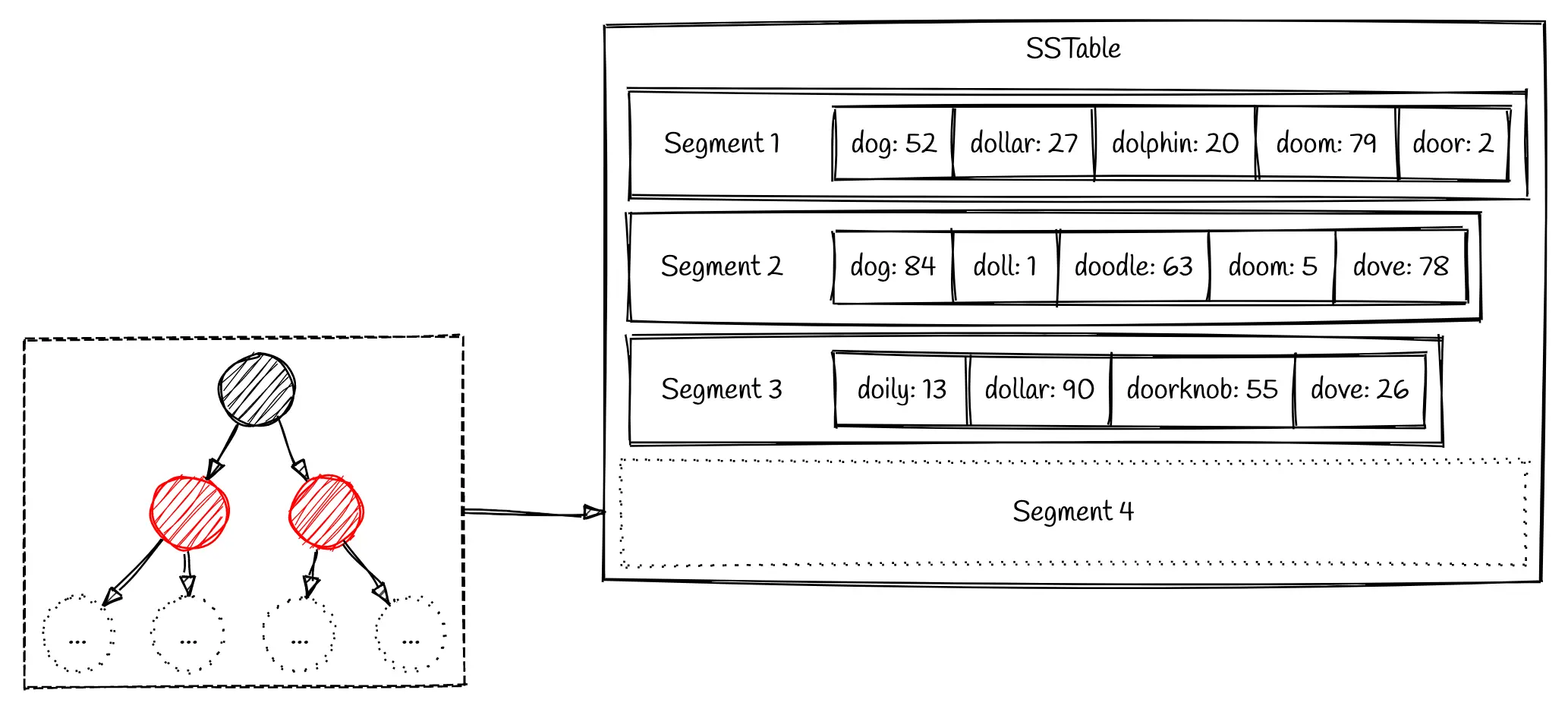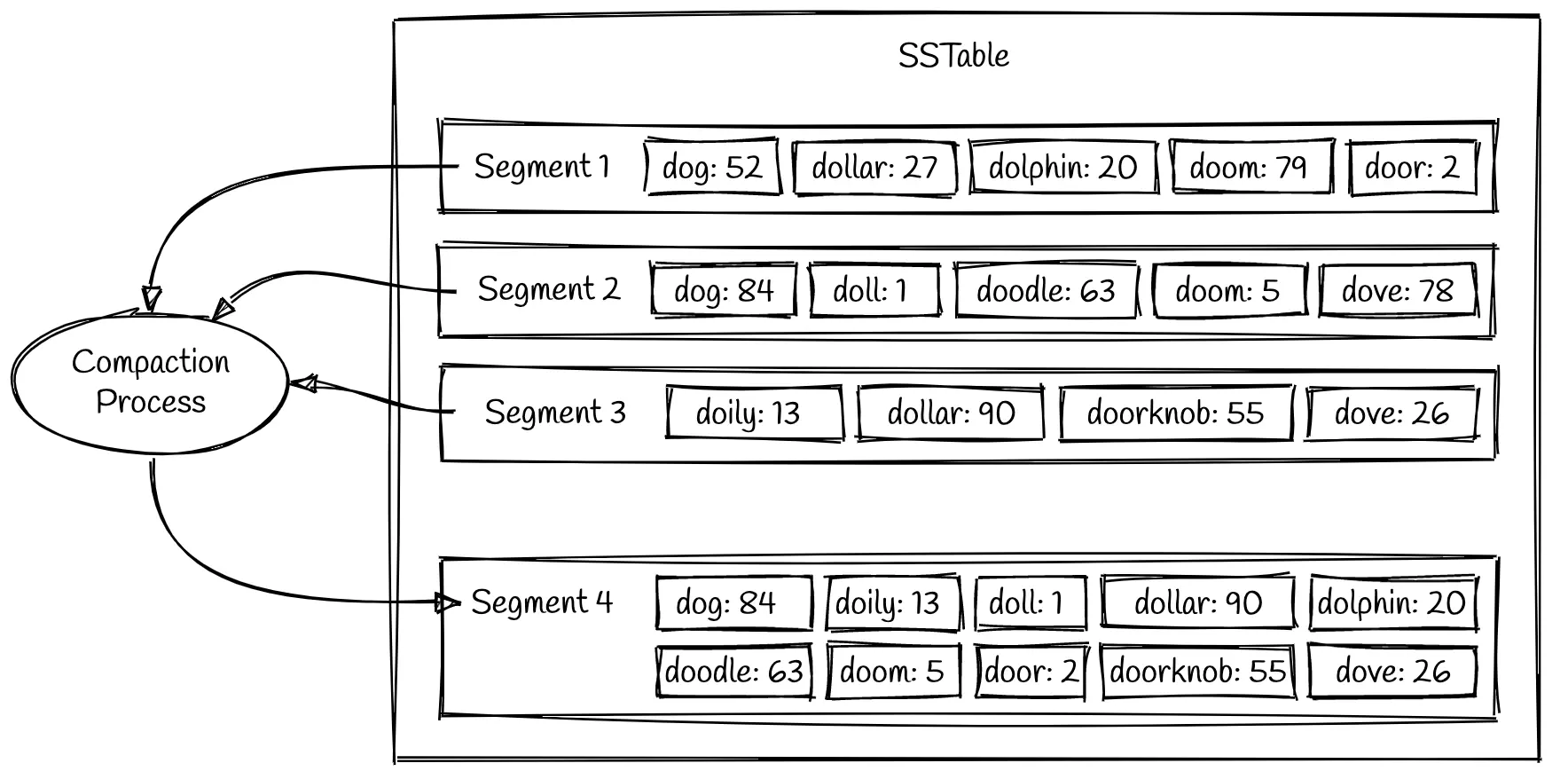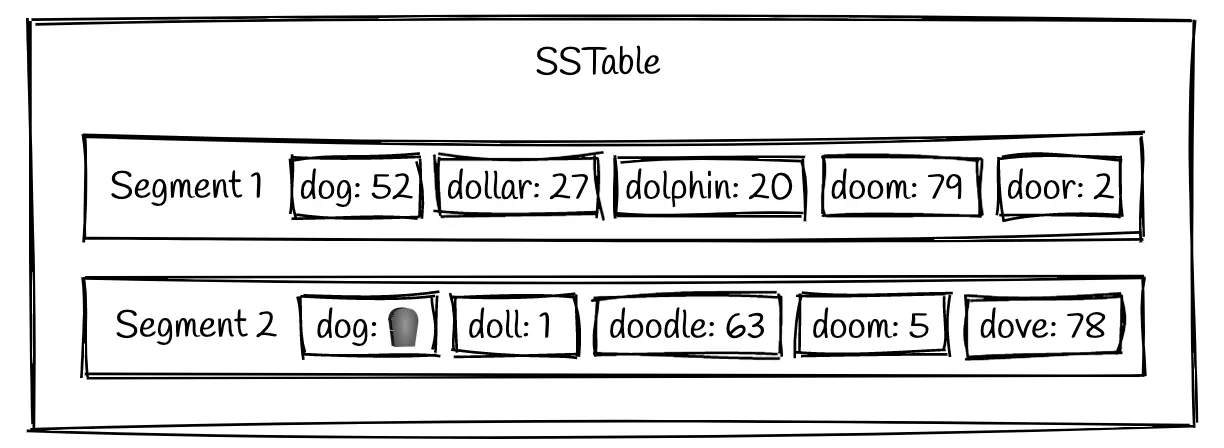LSM trees are persisted to disk using a Sorted Strings Table (SSTable) format. It is a format for storing key-value pairs in which the keys are in sorted order.
The main reason why LSM provides high write throughput is that every write request is actually performed only “in-memory” in contrast to traditional B Tree based implementation where the updates are done to disk which can trigger an update to an index making it very expensive.
Writing Data
An SSTable will consist of multiple sorted files called segments. These segments are immutable once they are written to disk.

The data writes get stored in a Red Black Tree until the tree reaches a predefined size (memtable). Once the Red Black Tree has enough entries, it is flushed to disk as a segment on disk in sorted order. This allows us to write the segment file as a single sequential write even though the inserts may occur in any order.

Reading Data
First check the in-memory data structure, then search the sorted tables on disk.
We can use sparse index and Bloom Filter to optimize read performance on disk.
Sparse Index
A sparse index is an index that does not include all documents in a collection, but only a subset of them. This can be useful when there are many documents in a collection, but only a small subset of them are frequently accessed or queried
But what if the key is not present, in this case we can use a Bloom Filter to tell if a value is missing from our data.
Compacting Data
Compaction is the process of merging multiple sorted tables into a new, larger sorted table. Once the compaction process has written a new segment for the input segments, the old segment files are deleted.
It also removes the tombstone.

Deleting Data
In an LSM tree, data is not deleted in place from the log, as doing so would require random I/Os and add overhead to the system.
Deletes actually follow the exact same path as writing data. Whenever a delete request is received, a unique marker called a tombstone is written for that key. Eventually, tombstones will get compacted away so that the value no longer exists on disk.
